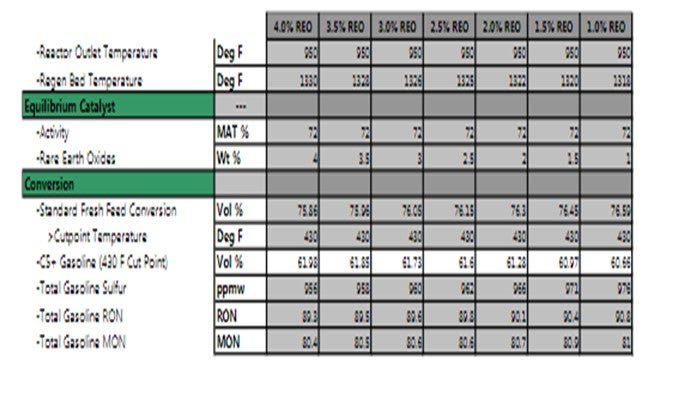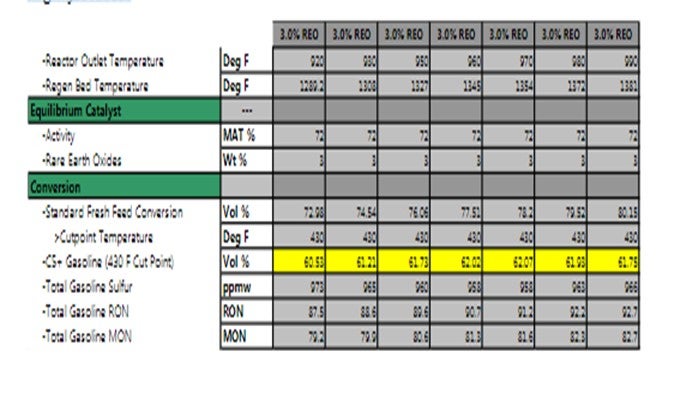Question 76: What FCC operating, and catalytic changes can lower gasoline sulfur while retaining octane? How would feed hydrotreatment impact these options? How would the FCC operate and catalytic changes impact gasoline post-hydrotreating?
ZACH BEZON [United Refining Company (URC)]
The following changes can be done to lower gasoline sulfur and retain octane:
1.Lower gasoline endpoint
2. Increase main fractionator reflux rate
3. Increase matrix activity,
4.Increase cat-to-oil, or
5.Use an additive, such as D-Prism, to shift sulfur away from gasoline
Hydrotreating the entire FCC feedstock upfront will allow more flexibility in operation of the reactor/regenerator. Delta coke will decrease with a hydrotreated feedstock, which will lead to a colder regenerator and will drive a higher cat-to-oil ratio. Increasing cat-to-oil will directionally increase both gasoline yield and octane number. Hydrotreating will also decrease metal contaminants, which will directionally reduce the amount of hydrogenation reactions, and lead to an increased octane number in the gasoline pool. Overall, FCC gasoline octane from a unit with hydrotreated feed should be a few points higher versus having a sour feed and hydrotreating the gasoline products.
Any operational or catalytic changes that directionally reduce your gasoline sulfur will make downstream hydrotreating easier (less severe). This sulfur reduction can lead to longer hydrotreater life via reduced operating temperatures and delta T.
ALEXIS SHACKLEFORD (BASF Corporation)
Here, the effect of catalyst changes and ROT (riser outlet temperature) are explored. As shown in table below, at constant ROT and constant catalyst activity, a low rare earth oxide (REO) catalyst will boost gasoline octane but will also increase gasoline sulfur. These data were obtained by KBC modeling at constant conditions.

The effect ofROT on gasoline octane and sulfur content are shown in the next table. By raising ROT, gasoline octane will increase while gasoline sulfur content is estimated to be slightly reduced.

Refineries should work with catalyst suppliers to optimize operating conditions and catalyst properties to reach multiple goals within constraints.